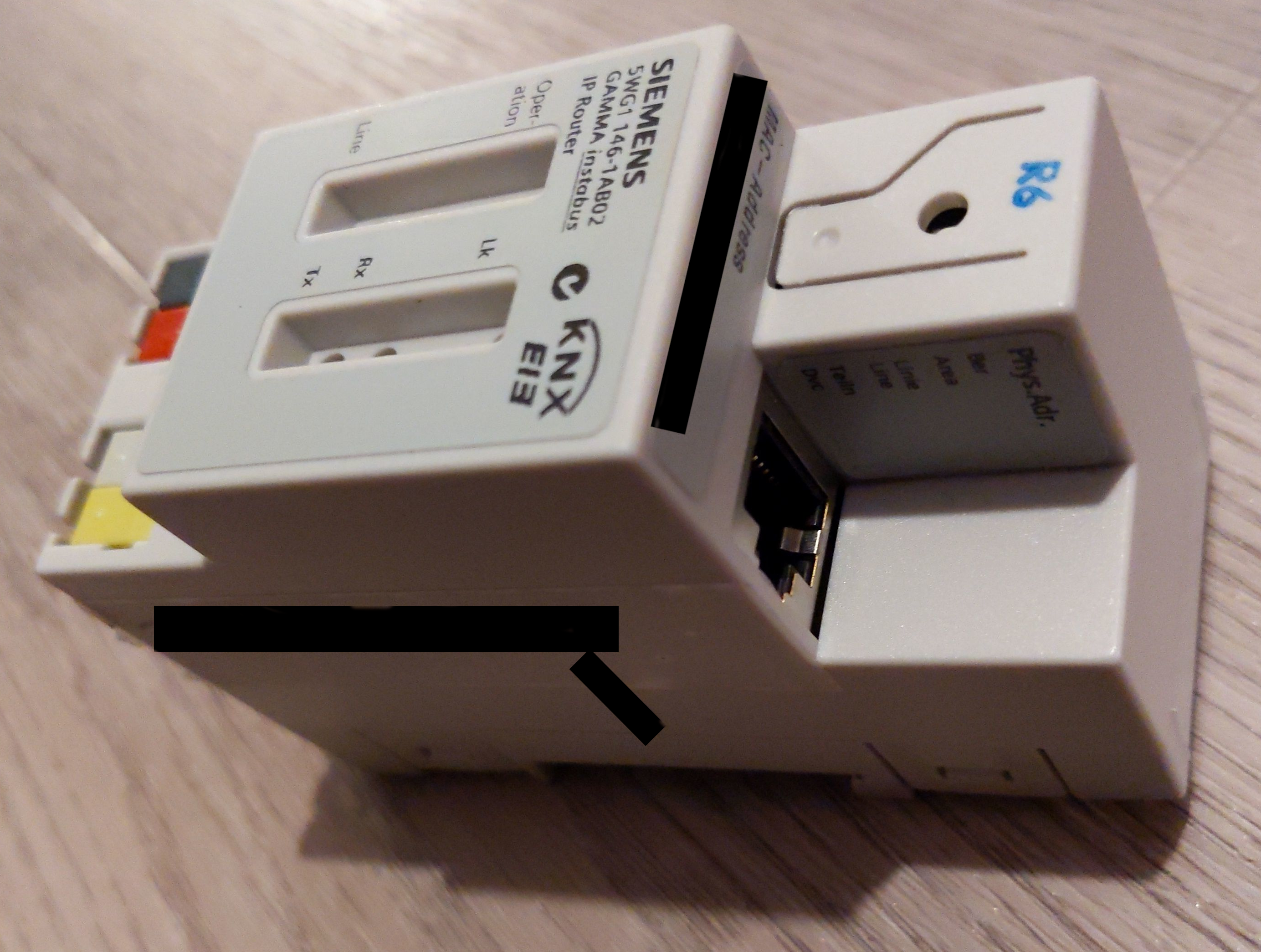Siemens KNX-IP Router
The Siemens KNX-IP Router (5WG1 146-1AB02) is a
bridge to KNX networks.
Right now there are two known methods available to communicate to the IP Router. Either sending UDP messages via a preconfigured multicast address or sending UDP directly to a single IP router.
The first requires an endpoint that supports multicast the latter requires only UDP support.
If you decide for any reason not to use multicast remember that your application has to handle more complex messages and "establish" a connection via a handshake instead of just sending telegrams.
The IP router will translate and forward directly received messages via multicast to other devices that are available within your multicast domain. Therefore you don't have to care much about how to send messages to all members in your network.
Trivia
The IP router has to be configured to a multicast IP address (e.g. 224.0.23.12)
and a static IP or DHCP assigned.
The default port for the KNXnet/IP protocol is 3671/udp.
Multicast vs direct connection
Since we want to know what's send on the wire I used a Linux machine with two network interfaces, linked into a network bridge and connected between the IP Router and the rest of the devices in the network.
$ brctl addbr knx0
$ brctl addif knx0 enp3s0f3u1u2u3
$ brctl addif knx0 enp3s0f3u1u2u1
$ brctl show
bridge name bridge id STP enabled interfaces
knx0 8000.a69caebd4e66 no enp3s0f3u1u2u1
enp3s0f3u1u2u3
$ ip a add 192.168.9.250/24 dev knx0
$ ip r add to 224.0.23.12 dev knx0
This setup provides the ability to capture the whole network traffic between the IP Router and other network devices.
While watching into the protocol I had access to a Siemens S7-1200 which does not support multicast.
The IP router did neither respond nor react to telegrams sent to the device IP directly. To see if the IP Router responds only to multicast requests I wrote a stupid proxy to translate those udp datagrams into multicast messages
#!/usr/bin/python
import socket
UDP_ADDR = '192.168.9.250'
MCAST_GRP = '224.0.23.12'
MCAST_PORT = 3671
mcast = socket.socket(socket.AF_INET, socket.SOCK_DGRAM, socket.IPPROTO_UDP)
mcast.setsockopt(socket.SOL_SOCKET, socket.SO_REUSEADDR, 1)
mcast.bind((MCAST_GRP, MCAST_PORT))
udp = socket.socket(socket.AF_INET, socket.SOCK_DGRAM, socket.IPPROTO_UDP)
udp.setsockopt(socket.SOL_SOCKET, socket.SO_REUSEADDR, 1)
udp.bind((UDP_ADDR, MCAST_PORT))
while (True):
buffer = udp.recvfrom(1024)
size = mcast.sendto(buffer[0], (MCAST_GRP, MCAST_PORT))
print("sent: %d" % (size))
This test proved that our first telegram was properly and the IP router seems to only respond on multicast.
But there's more. The router accepts directly addressed datagrams as well if you deal properly with the "tunnel interface". In case you have to use a direct connection to a KNX-IP router your software stack has to request a tunnel/channel where telegrams can be send and forwwarded/tunneled by the router within the multicast domain.
Such channel will be assigned on a tunnel request to the IP router and announced in it's response. There may multiple channels to be handled since a connection request will use a different channel than a configuration request.
Long story short: Multicast requests are much simpler than connecting directly to an IP router because direct connections require more logic in your application stack.
